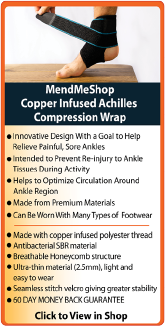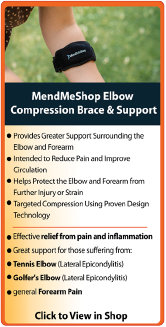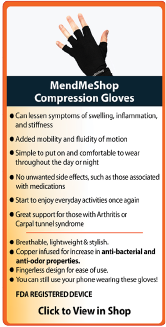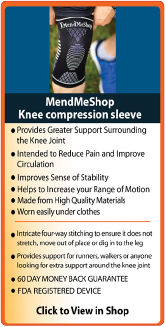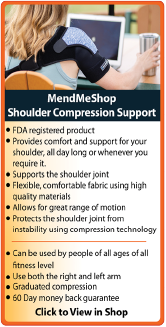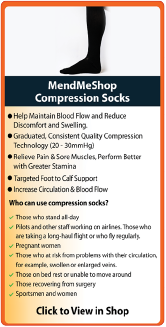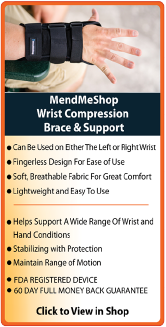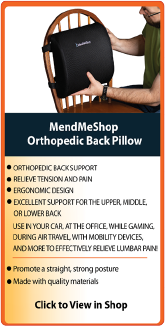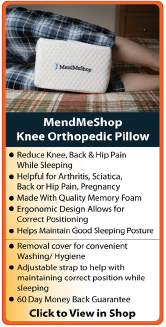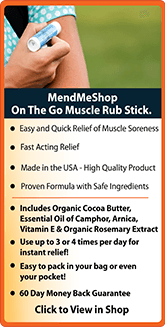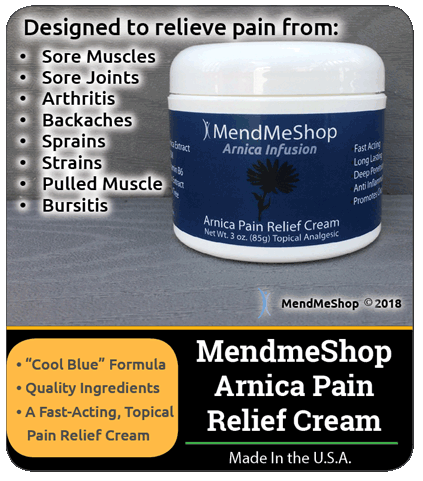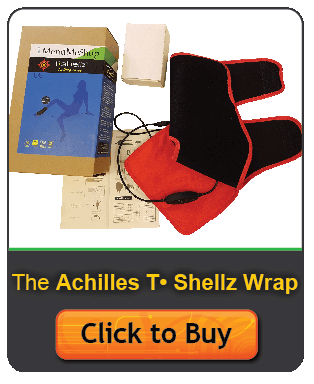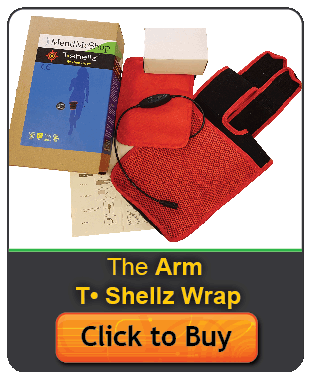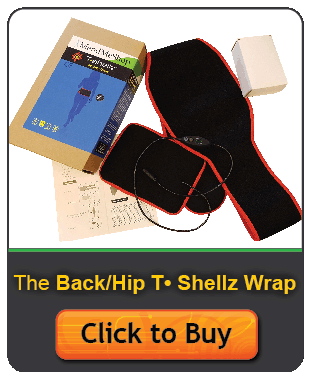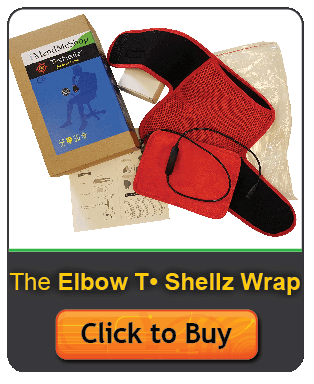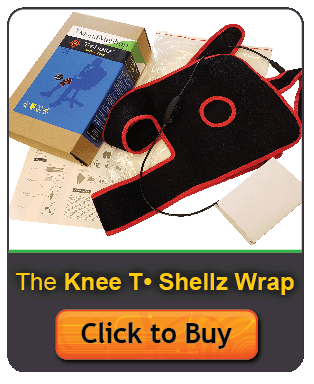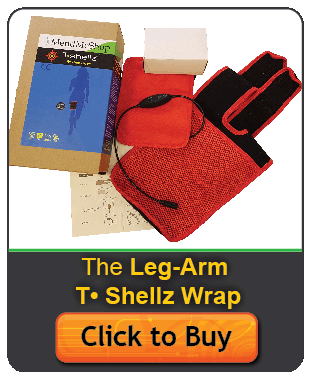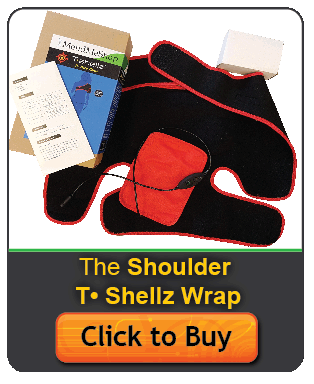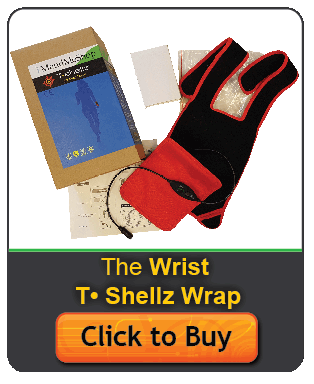|
| Advanced Treatment Options For TendonitisConservative Home Treatment Options for A HIGH PERCENTAGE OF OUR CLIENTS HAVE:
...they simply decided to read and learn about their injury, try our home treatment recommendations and committed themselves to a daily treatment protocol. Before going further, an understanding of the three major stages of the healing process is critical. With the right knowledge and the right treatment options, you can accelerate your recovery without the fear of re-injury or setbacks (which unfortunately, happens a LOT with tendonitis injuries - we will explain why further down the page). Stages of Healing TendonitisRegardless of what tendonitis you may be suffering from (knee, hip, shoulder, elbow, ankle), the treatment stages are the same. The location of the treatment is wherever the inflamed tendon may be. Step 1: Reduce Initial Tendon Inflammation Inflammation is the body's natural response to a tendon injury and is a normal part of the healing process. Swelling, pain, heat sensation, redness, and loss of function are the main symptoms experienced with inflammation and it is your body's way of telling you there is something wrong. For certain soft tissue injuries, there may be no other option than surgery. As an example, if you have a full tear (often termed as "avulsion") of a ligament, tendon or muscle - attachment surgery will be required to sew them back together; in some cases, graft surgery (moving soft tissue from one site to another) is utilized when reattachment success is improbable. Most people know already that the combination of rest, topical pain relief cream and the use of a Cold Compress or Ice Pack (when there is swelling) is the gold standard in medicine for minimizing tissue damage and reducing inflammation after a soft tissue injury (soft tissue = tendons, muscles, ligaments). It serves as a critical starting point before continuing into the next phase of the healing process. Step 2: Enhance Blood Flow to the Injured Tendon and Surrounding Muscles & LigamentsTendons, ligaments, cartilage, and some muscle fibres are considered dense soft tissue. As a result, they naturally receive limited blood flow and this is precisely why injuries to these tissues take so long to heal. Knowing that enhanced blood flow is a critical necessity for accelerated healing of soft tissue, the challenge becomes this: How do you effectively increase blood flow to dense soft tissue (tendons) that normally receives very little blood flow?
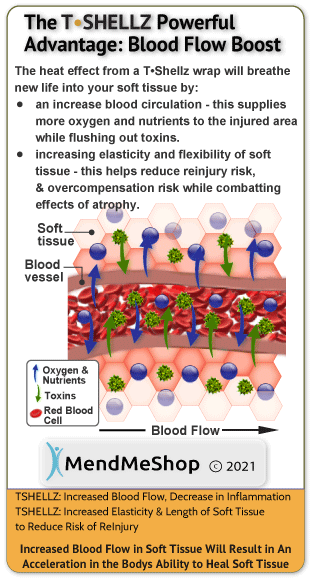 It is through the blood the body carries the nutrients and oxygen that injured tissues rely on for recovery.. It is well known that increased blood flow helps your body accelerate the healing process. When you are suffering from a tendon injury, there is reduced blood flow to the injury site. Inflammation and reduced movement (lack of activity or on-going immobility) will reduce the flow of blood - and if you think about it, this makes sense. Moving the joint(s) where you have tendonitis is very painful - so it is very common for tendonitis sufferers to have significantly reduced mobility. Over time, reduced movement leads to atrophy - a shortening of muscles, tendons and ligaments of the joint. Due to this - as your tendon heals - you run a high risk of straining your muscles and tendons as they have become shortened due to lack of use. This leads to a high risk of strain and reinjury, possibly putting you into a chronic soft tissue injury cycle. Step 3: Recognize That Healing is a ProcessWith dedication, the right tools, and the right information, you will achieve your goal of a sustainable recovery. A combination approach of cold compression, TShellz Wrap® treatments, and functional movements should make it happen much more quickly.  In our experience, soft tissue repair rates via conservative home treatment methods using a dedicated, comprehensive approach have surprised many of our clients, but will differ from person to person. In nearly all cases, however, it is very important to stop whatever you were doing that created the injury in the first place (ie. running, repetitive movements at work, etc). What is a Tendon?Most of you are reading this because you suspect you have a tendon injury, or perhaps you have already received a confirmed diagnosis (tendonitis, partial tendon tear, tendinosis, tenosynovitis). Either way, you are most likely interested in learning; what are the steps I need to take to properly heal my tendon? We receive questions like this on a daily basis. The approach we take is based on years of experience and based on sound, scientific principles. We discuss these approaches in-depth further down the page and throughout the rest of the website. Before getting into that however, it is important to understand the characteristics of the tendon and the role it plays within the body. A tendon is a tough yet flexible band of white fibrous tissue that connects a muscle to other budy parts - usually a bone. As an example, when your bicep muscle contracts the pulling force from the contracting muscle travels through a tendon located around the inside of the elbow (named the "distal biceps tendon"). The distal biceps tendon attaches to the radius bone in the forearm. This means that contracting the biceps muscle exerts a pulling force on the forearm via the tendon and has the net effect of pulling the forearm toward the upper arm. Many parts of the body exert a lot of force via leverage, and your tendons bear the brunt of this force; as such, tendons are needed to be very tough. The achilles tendon is the largest tendon in the body, and its main function is the transmission of power from the calf muscles to the heel and foot. When walking, running or jumping, the achilles at times can bear forces equal to 3 times your body weight and more - this is truly amazing and speaks to the true toughness of a tendon. Some studies have shown that for runners, 20% of the achilles tendon is damaged and is continually undergoing damage/healing cycles - a true testament to the ability of the human body to continuously repair itself. So I Think I Have a Tendon Injury - What Should I Do?If you suspect you may have tendonitis, go consult your physician. Only your physician can truly diagnose if you are experiencing tendonitis - or any other tendon injury, and from this, determine a course of proper treatment. After seeking medical advice, your physician may recommend surgery (in cases of major tears or an avulsion) but in most cases, they will recommend conservative treatment options. How Long to Recover from Tendonitis?Tendonitis means that you are experiencing micro-tearing in the tendon itself and is often caused from repetitive stress to the tendon without adequate time taken between period to heal. See your physician if symptoms do not go away within a few weeks. It can take several months to get rid of tendonitis, though conservative treatments and/or medical treatments can speed up the process. It is important to deal with tendonitis quickly as the longer tendonitis continues, the greater the chance this injury will cause strains and secondary injuries due to overcompensation and decreased Range of Motion that accompanies tendonitis. Pre/Post-Surgery RecoveryIf tendon surgery is undertaken, you will find we have effective solutions for post-surgery recovery. If interested, read more about effective options for pre/post surgery here. Why is Fast Healing Important for Tendonitis?Once a tendon becomes irritated and inflamed, recovery time is lengthy, requiring a reduction in activity for a long period of time to allow the tendon to heal. This is why many chronic (long term) tendonitis sufferers start having muscle atrophy and range of motion issue in the affected joint. An inflamed tendon will often starting causing inflammation in nearby areas, and your immobile joint will begin to lose more flexibility as unused muscles shorten over time (atrophy), leaving you more prone to restraining of the tendon and nearby muscles. This is why it is important to heal your tendon as quickly as possible - you need to avoid the vicious cycle of decreased Range of Motion and re-injury that will occur with chronic (long term) tendonitis. The Good News: the Body uses Blood to Repair ItselfBefore we go further, it is important to understand that your body is capable of healing itself. This is why your physician will always try to opt for the conservative treatment first - usually it works although it does take time to heal. Your blood flow carries oxygen and much needed nutrients to damaged tissue in the body while also flushing away toxins and waste at the same time. When you have a tendon injury, however, there is not much blood flow to your tendons; inflammation and lack of joint movement will reduces the flow of blood to the injured area as well, starving your injured area of much needed nutrients to repair itself. Further to this, if you are moving your injured joint around you run a risk of increasing the severity of the injury. If there has been some healing, you could re-injure your tendon all over again. Blood Flow (the natural healing process in your body) needs assistance for such injuries because blood flow is greatly restricted when you are immobile. When treating any soft tissue injury such as tendinitis or a partial tear, an effective treatment will increase blood flow to the injury while the joint is immobile. The increased blood flow will accelerate the body's own ability to heal itself. Re-injury of the Tendon Must be AvoidedIt should be apparent that anyone suffering from a tendon injury should want to minimize their chance of worsening the injury, or re-injuring it once it has started to get better. Obviously, a worsening injury will delay the healing process, but what's worse is that every re-injury and additional healing cycle increases the amount of time that your joint is immobilized. Time is not kind to an immobilized joint - you lose strength in the joint but worse than that, you lose the range of motion in your joint via atrophy (your flexible tendons, muscles and ligaments slowly shrink, decreasing joint elasticity). The more time that goes by with an immobile joint, the more likely you will wind up with a chronic joint problem (long term injury with persistent flare-ups). Basically it means that your joint will not perform as well as it once did and it becomes more prone to injury again later on. Just Because The Pain Has Dropped, It Does Not Mean The Underlying Injury Has HealedA couple days later after some rest on the sofa and/or time off of work, the pain has gone down (as well as the swelling) and this is where most trouble will start! The pain disappeared with the swelling but your tendon isn't fully healed. Not knowing this, we get back to work again and in so doing, prevent the tendon from healing completely, usually re-injuring it again. We continually re-injure the area through our daily activities, often making what was a small injury worse or turning an acute injury into a chronic injury. If you have an injured tendon, it's very important to heal it quickly and completely. Minimizing the healing time should be an obvious goal, as a serious tendon injury will assuredly limit your ability to go about your daily routine. "Not all tendon injuries start out serious. But often the small tendon injuries can lead to a worsening injury, joint damage and disability if left untreated. And having a tendon injury - even a minor one - makes it more likely that you'll have similar injuries in the future." A Tendonitis Injury Does Not Have to Persist For Months Or Longer. Here is Why It Does For ManyRecovery from a tendon injury can take a long time, especially when some of the less effective, traditional methods are utilized. This is simply because many treatments either focus on masking of pain or are too inconsistent to provide sustainable improvement. 1: Visits to Physio (PT) Help - We Always Recommend It - But It Can Be Costly And InconvenientWhile we tout the benefits of PT and believe it to be integral for most sufferers of tendonitis, the problem is that people only attend sessions a few times a week. To truly provide a long term solution to your tendon strain, you need to be receiving multiple treatments on a daily basis. Not just any type of treatments, but ones that focus on generation of new healthy tissue. Treatments for tendons are cumulative in nature...meaning the more the treatments are administered, the faster the benefits can be experienced. Who these days has time to visit a therapist on a daily basis? Not only is your time limited, but the cost of daily PT sessions is out of reach for most people. Therefore, the focus needs to be on adding treatment options that can be done frequently, from the comfort of your own home (and even the workplace if the opportunity presents itself). We will discuss these options later on down the page. 2: People Tend To Focus Too Much On Cold TreatmentsWe see it all the time - people for weeks and even months only focus on using cold. Doing too much cold will actually inhibit the recovery because you are starving the injured tissues of the blood flow they need to repair and rebuild the collagen. Cold restricts the vessels - reducing the blood flow to the tissues that truly need it most. Cold treatments should be more focused on in the earliest stages of an injury with much less focus in the mid and latter stages.The truth is, there will always some mild inflammation associated with tissue injuries. However, some of that inflammation will remain UNTIL you begin to focus on healing the soft tissue (muscle). Once this begins to heal, the inflammation will then subside more permanently - not just temporarily like with cold treatments. As an analogy, think of a home with a leaky roof. You can place a bucket on the floor of the attic whenever it rains - and this will help temporarily, but does it truly address the situation? Obviously the answer is no. Not until you focus on repairing the structural issues with the roof - will the problem be actually solved. The same concept applies to injured soft tissue - you need to focus on reinforcing growth of flexible, strong tissue. To do this, you need more blood flow reaching them, not less. 3: Injections Can Cause Harm If You Are Not CarefulThis can be VERY helpful in alleviating pain and in many cases, pain relief alone can make a huge difference. However, some people get a false sense that their injury is healed because they are not experiencing the pain they once did. Some individuals even engage in activities they should not be doing because they "no longer feel pain". Once the effects wear off, people often find their bursitis persists . This of course, results in a prolonged recovery. Be very careful about your activity after the injection because there is little, if any, pain feedback to tell you that you're overdoing it. Merely masking the pain can be very helpful temporarily, but it is not a solution; it is just a temporary fix. 4: Tendinitis Sufferers Continue to Aggravate & Re-Injure Their TendonIt goes without saying that anyone suffering from tendonitis or tendinosis should want to minimize their chance of worsening the injury, or re-injuring the tendon once it has started to get better. Obviously, a worsening injury will delay the healing process, but what's worse is that every re-injury and additional healing cycle increases the amount of time that your joint is immobilized. Time not kind to an immobilized joint - you lose strength in the joint but worse than that, you lose the range of motion in your joint via atrophy ( muscles, tendons and ligaments slowly shrink and weaken, decreasing joint elasticity). The more time that goes by with an immobile joint, the more likely you will wind up with a chronic joint problem (long term injury such as tendinosis and/or bursitis). Basically it means that your joint will not perform as well as it once did and it becomes more prone to injury again later on. Tendon Injuries - Can Certainly Be Life Changing...If you've been living with the agony of tendonitis, tendinosis or tenosynovitis for some time now, it's almost a sure thing that you're feeling discouraged, tired, and worn-out. Seemingly simple chores are now impossible - like getting in and out of a car, cooking a meal, or just standing and walking for significant periods of time. The constant pain has most likely interrupted your sleep, just adding to the long-term misery that this condition can bring on. Inflamed tendons cause extreme pain and reduce your ability to move. It can be very challenging to keep a positive attitude and outlook when suffering from the pain and immobility that a tendon injury can bring. If you choose to ignore tendonitis, you may end up in a long term downward spiral. What ends up happening is that significant pain from a tendon injury will often freeze you up over a long period, cause overcompensation injuries and decrease the range of motion in your affected joint (which can by itself cause secondary soft tissue injuries). This will definitely set back your recovery; in some cases, it can trigger a long term problem that never goes away (reduced joint mobility, tendonosis, permanent limp). Yes, Tendonitis Is A Serious Injury - AND It Can Also Lead to Other Conditions and InjuriesEvery time we use our joint where there is a damaged tendon, these tendons and muscle tissue move; and when this happens, every movement hurts. With injured soft tissue, pain happens - sometimes a LOT of pain, so we try not to move it. So, when doing something we need to use our affected joint for (climbing stairs, getting up from the sofa, moving a car wheel, walking to the mailbox), we start to use the non-affected joints more. In the case of tendonitis in the shoulder, we use our other shoulder instead even though it is inconvenient. In cases of tendonitis in the hip, you may find you are using your knees and back more - and so forth. If you overcompensate long enough, other joints start to hurt - they are being overused and taking the load that your affected joint once did. Soon, aches and pain can become commonplace elsewhere in the body - all as a result of the original tendon injury and the body's instinctive nature to "protect" the original injury - all because the injury wasn't fully healed in the first place! We continually re-injure the tendon through our daily activities and now this injury has become a chronic tendon injury.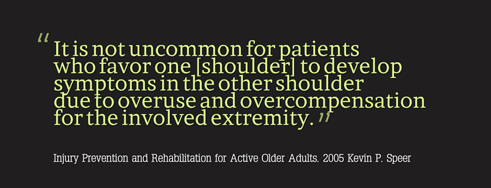 Muscle imbalances result, placing tension on bone and softer tissues - leading to a misalignment within the lower body. The extra stress on the opposite side of the body will also result in weakness and fatigue of soft tissue - increasing the chances they can eventually be injured or gradually degenerate. This is a textbook example of how you get an overcompensation injury. In some cases, PTs warn that overcompensation can be very dangerous as it will affect gait or alignment on a permanent basis. An injury to one tendon can easily lead to straining in other areas, making an overall recovery hard to initiate. For example, a serious case tendon strain in the right achilles can often lead to over-straining of the left achilles tendon and even hip or knee strain. Most commonly, the injury occurs on the dominant side, so the risk of straining the other (weaker) side increases. The longer the injury (and corresponding pain) persists, the greater the chance that you will sustain more strain from overcompensation, eventually leading to issues in those areas as well. To minimize potential secondary injuries, know that it is important to deal with your tendinitis injury quickly and completely. Truly, long lasting tendon injury pain can trigger a vicious overcompensation and re-injury cycle - which is why it is absolutely critical to focus on methods that improve and strengthen the injured tendon in a timely manner. The faster you truly heal, the less chance you have of sinking into a downward spiral of re-injury, scar tissue growth, atrophy and overcompensation injuries. Okay, So I Have Tendonitis ...What Should I Do Now? Are you looking for a superior level of treatment for your injured tendon or chronic tendinitis pain? There are options for a superior level of treatment for tendon injuries that you probably do not know about. A great number of our clients have achieved their goal of overcoming a debilitating tendon injury and have returned back to their regular activities sooner than expected by treating themselves at home. If you suspect you may have a damaged tendon, the first thing to do is consult your physician; only your physician can give you a proper diagnosis and from this, determine a course of proper treatment. After seeking medical advice, your physician will determine the degree of severity, look for signs of infectiong determine whether or not it is actually a symptomatically similar condition (important!). In some cases of severe tendon damage, your physician may recommend surgery in which case a conservative treatment protocol would be recommended after your skin heals up from the surgery. 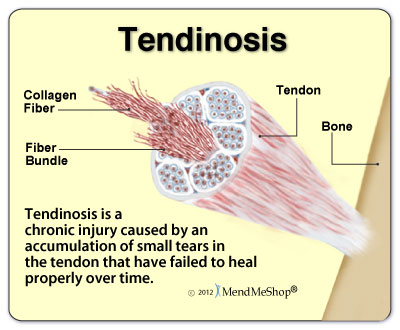 Anyone can injure their tendon badly, not just professional athletes. Tendon injuries are very common and are often a result of a quick high load force or conversely, frequent repetitive movements that will strain and even tear the tendon over time. There are hundreds of possible tendon injuries though the rotator cuff, bicep, achilles, elbow and and knee tendon injuries are most common. Regardless of the location of the tendon injury, a strained or partially torn tendon is painful and your affected joint can feel very unstable. Tendon injuries can persist for years and be disruptive to your way of life. Recovery can take a long time but proper healing is essential to regain strength and get you back to the activities you enjoy. You will find it is almost impossible to keep from re-straining your tendon because even when the pain is gone you still aren't fully healed. But, when the pain disappears, that's when we start moving (and working) normally again even though it isn't fully healed. It's just not possible to stop everything and rest the injury properly. Everyone has demands that make them keep going and when we are active we prevent the knee from healing completely. We continually re-injure the area through our daily activities which can often lead to tendon surgery or long-term chronic (permanent) injury later on. If your tendon is strained or partially torn, your physician will almost always recommend conservative treatment options - conservative treatment options for a tendon injury typically means rest, ice the injury, elevation of the injury and take anti-inflammatory medication. If your physician has decided that your injury can be treated with conservative treatment options, then you will find that many of our customers have had great success treating themselves via the guidelines we mention below. If surgical intervention is required, these same recommendations often apply for post-surgery recovery as you will find them to be effective for reducing post-surgery inflammation, enhancing range of motion and minimizing scar tissue growth. Keep in mind that the TShellz Wrap® should only be used a minimum of 6 weeks after surgery and once you have been assigned home stretching from your doctor or PT - basically not until at least 6 weeks after surgery) Always consult your PT or surgeon before beginning any home treatment post surgery. A general outline of our conservative home treatment recommendations follow.. Stage 1: If the tendon injury is very recent - use a good quality cold pack and Arnica Pain Relief Cream. If the injury has been going on for awhile and there is little to no swelling or inflammation, skip to Stage 2 below.If you are experiencing pain and swelling in the very early stages of the injury (first 48 to 72 hours), the first step in a conservative treatment protocol would be to focus on reducing the discomfort by applying a Cold Compress or Ice Pack to the injured tendon along with a high quality pain relief cream such as our Arnica Infusion Cream. Not only will you use your Cold Compress or Ice Pack for the first 48 to 72 hours after the injury, but you should also use it during other stages of the healing process. Some examples include...
Having a Cold Compress or Ice Pack available at home to use if and when the need arises is helpful. Many of you already do so. However, too many people over-focus on cold while ignoring the most critical aspect to healing - nourishing the injured tissues with a healthy supply of blood flow needed to repair and rebuild the injured tissues. This leads to the most important recommendation... Stage 2: Focus on Increasing Blood Flow To The Injured Tissue - This Is What Your Body Depends on to Heal Damaged Tissue for the Long-TermEven though the concept is simple, improving blood flow to injured soft tissue can be difficult. When the injury is tendon related, the challenges are even greater as there is very little blood flow to a tendon in the first place - This is one of the reasons why it is so slow to heal. Traditional methods require movement to promote blood flow (exercise), but that same motion that promotes blood flow can at times lead to making your pain and condition worse.
Most people we deal with tell us these scenarios have happened to them many times in the past. Perhaps it has already happened to you. Promoting blood flow within soft tissue to help the body heal itself is a concept that has been utilized for centuries. This is where the focus has to be if you are seeking long-term improvement. Oxygen and nutrients, carried within the blood, are critical for the body to heal itself. Without proper blood flow, recovering from an injury or condition will be delayed...sometimes for a very long period of time. The real challenge is how do you promote blood flow to the injury site without causing further damage? This goal is further complicated by the fact that tendons receive very little blood flow to start with. Energy emitted by the TShellz Wraps® operate by increasing blood flow in our injured soft tissue. Soft tissue includes ligaments, muscles, and tendons. The objective of the TShellz Wrap® is to increase blood flow in these targeted areas, resulting in relaxation of the vessel walls. The vessels then gently expand, allowing for more nutrient rich blood flow along with extra oxygen to reach the damaged tissues. Plus, the enhanced blood flow helps in flushing waste and fluid build-up from the injury site - further enhancing the ability of the body to heal. Once energy from the TShellz Wrap® absorbs into soft tissue and surrounding area, the metabolic response then kick starts the repair process.T•Shellz Wrap. More blood now begins to flow effectively to injured soft tissues within the body - the injured tissue needs the extra blood flow to heal as it is through the blood the body carries the oxygen and nutrients needed for proper and long-term healing. Now, on to recommendation number two in the journey to heal your injured tendon... The TShellz Wrap® - The Blood Flow Boost Your Body Depends On to Heal Soft Tissue For The Long TermThe best option we came across in our research to accomplish a substantial of blood flow to soft tissue outside of exercise is the TShellz Wrap®. Use of this device results in an increase of blood flow to the treatment area - all in a non-invasive manner. Have you seen what happens when you add water to a flower wilted from drought? In essence, your injured tendon is much like a "wilted" flower; your body wants to heal its injury, but needs lots of nutrients to do it. Blood brings new life to your tissue by delivering healing nutrients and oxygen that are vital for its survival. In addition, the blood carries away toxins and waste cleaning the area and healing it faster. Without a good supply of blood, your tendon simply won't heal properly. Using a TShellz Wrap® will not expose you to the risk of causing further harm to soft tissue like you can when using rigorous exercise. The TShellz Wrap® accomplishes the goal of enhanced blood flow without the need for intensive exercise and as such reduces your risk of re-injury. TShellz Wrap® = Accelerated Blood Flow for Soft Tissue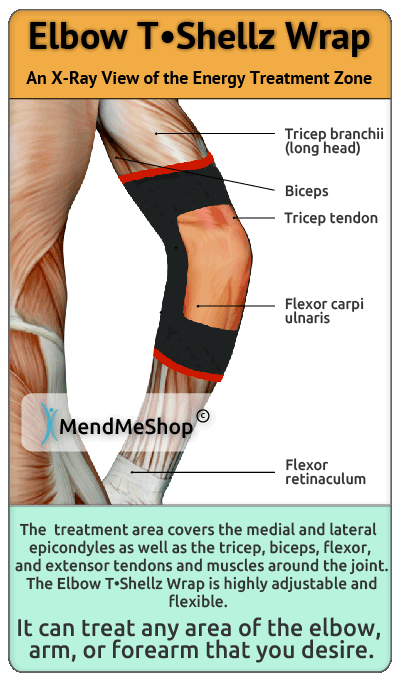 The intention of a TShellz Wrap® is to ease pain by blood vessel dilation, decrease stiffness by elongation of soft tissue, improve blood circulation, and boost metabolism and enzyme activity. In stimulating localized blood flow to damaged soft tissue, you provide needed oxygen and nutrients to grow strong healthy collagen. In addition, you will experience a clearing of toxins and excess fluid build up from the injury site. Over the intermediate term, this helps to reduce incidents of swelling as trapped fluids will be whisked away - reducing pressure on blood vessels. Using the TShellz Wrap® is truly a unique experience. Within moments of applying a treatment to your injured tendon, you can feel the healing sensation due to the increase in blood flow deep within the area. During a treatment, and for quite some time after you finish, the treated area will feel relaxed and less painful. It's a very soothing sensation and extremely effective. Who Should Use the TShellz Wrap®We recommend the use of a TShellz Wrap®:
Increased Blood Circulation = Increased Healing Rate TShellz Wraps® contain a unique, flexible Carbon Fiber Energy Pad which is flexible and will shape to conform to your body. This Energy Pad emits a uniform wave of perfectly safe energy over its entire surface. This energy is absorbed by soft tissue in the treatment area, opening blood vessels which result in an increase in blood flow. Increased blood circulation is what your body needs to accelerate the healing of soft tissue and this is why we recommend the TShellz Wrap®. The TShellz Wrap® is an FDA Registered Medical Device and is suitable for use in therapeutic clinics and FROM HOME. It is completely safe for people and patients to use for themselves. Have you ever wondered by an athlete can return to activity after 3 or 4 weeks following a soft tissue injury - while your average person takes much longer to return back to normal? The secret isn't really that much of a secret - it involves consistent treatments (meaning multiple times a day) using a diathermy treatment like the TShellz Wrap® to stimulate blood flow in and around injured soft tissue. Often, athletes have the luxury of using in-house facilities many times per day. How many us can afford the time and money to visit a clinic multiple times a day? Very few indeed. This is how you can gain the same advantage that athletes enjoy in healing their own injuries - by using a device like the TShellz Wrap® two or three times a day on a consistent basis. Consistent Treatments = Consistent And Long Term Improvement What Else Makes the TShellz Wrap® So Special?We believe the TShellz Wrap® to be one of the most effective blood flow boost treatments that can be used at home. We can promise that you will receive a product that is designed to be safe and does what it is supposed to do...quickly relieve pain and aid in the bodys soft tissue recovery process for tendon, muscle and other soft tissue injuries. The unit plugs into a standard wall outlet to get its power. The nice thing about the power supply is that the same unit can be used in North America and overseas as well. It has the capability to operate between 110v and 230v. It has a special signal controller that can be set for 3 different power levels of application (3=High, 2=Medium, 1=Low). The cord is long so you can sit or lie comfortably and watch TV, read or surf the net while you're using it. Treatments are max 30 minutes in duration and the device can be worn over clothing. This allows you to use the device at work, at home, or really anywhere you have access to an electrical outlet. A Recap of the Benefits of the TShellz Wrap®..
When Should I Use My TShellz Wrap During the Day?The most common question we receive from individuals prior to purchasing is - how many times a day should I be using my wrap and when should I be using it? While treatment plans will differ for each individual and their specific injury, there are general guidelines that should be adhered to.
The TShellz Wrap® would then be used:
Stage 3 - In Between Treatments With TShellz Wrap®, Apply Our New Fast Acting Pain Relief Cream Called ARNICA INFUSIONDealing with aches and pains affecting the foot, ankle, leg, knee, hamstring, hip, back, arm, shoulder, elbow, wrist, or hand? If so, then applying the Arnica Infusion to any of these targeted areas will bring about fast relief from the pain and sore tissues. Simply apply a small amount of cream to the body and moments later, you will experience a soothing and comforting sensation over the area. Arnica Infusion is specially designed to relieve pain due to sore muscles and joints associated with arthritis, backaches, sprains, strains, and bruises. No matter if you are dealing with an acute injury, chronic pain, or a general "flare-up" - you will experience fast relief from pain and inflammation. This is a product that many of our current MendMeShop customers asked us to develop. So we focused our time and resources over the past few years and came up, with we believe, will be one of more effective, fast acting, topical pain relief creams on the market. You are likely familiar with some of the standard topical agents on the market as most of our customers use them. The are mass marketed and even found in most department stores now. Well, we are here to say that Arnica Infusion goes many steps beyond what they offer. Made in the USA at an FDA registered manufacturing facility, you can be assured that Arnica Infusion is both safe and effective. We only source top grade ingredients while implementing strict quality control checks during every step of the production process. Expect the same high quality that MendMeShop customers have been accustomed to since we started the company in 2005. The "Cool Blue" formula is the perfect balance between the smooth application of a cream and the effective absorbing factor of a gel. It is not too thick and not too thin - just the right texture. Best of all, it feels very nice on the skin! Each application of Arnica Infusion feels so comforting and soothing, we are certain it will become an item you will not want to live without. Arnica Infusion IngredientsThe Arnica Infusion formula is based on a combination of scientific research and the use of high quality ingredients. The properties within the formula were chosen for their pain relief, anti-inflammatory, and soothing qualities. The acting ingredients within the formula include ones many of us are familiar with; along with ones that have not received a lot of publicity (only in research circles). Extensive testing resulted in a blending of ingredients that provides the most synergistic of benefits. The notable ingredients in the Arnica Infusion formula include:
Extensive quality control procedures during the manufacturing process ensure the ingredients and final product are both safe and effective. We would not stake our reputation on anything but the best. When Do I Apply the Arnica Infusion?While At WorkApply Arnica Infusion at work to help reduce acute discomfort associated with overuse of muscles and joints. No matter if you are in a physical demanding job or work within an office environment, you will be placing stress on different parts of the body and aches and pains will result. Before Or After Work, Sports, & ActivityIf you suffer from a sprained ligament, pulled muscle, strained tendon, or even bruising - apply Arnica Infusion for quick relief of the pain. Chronic Pain SufferingApplication of Arnica Infusion can be done up to a maximum of 4 times per day on a consistent basis to help bring about relief from various pains and aches. In-between Treatments With the TShellz Wraps®Follow up your T-Shellz and Cold treatments with an application of Arnica Infusion. Combine the pain relieving benefits of Arnica Infusion along with the healing benefits of the wraps to make your recovery go much more smoothly. Do not apply Arnica Infusion within a 2 hour timespan before a TShellz Wrap® treatment. Whether you decide to use the Arnica Infusion in conjunction with the T-Shell and other treatments - or if you decide to use the cream as a stand-alone product - you will not be disappointed with the results. We guarantee it. A Note On OverCompensationSince you are reading this, you probably know that serious tendonitis or tendinosis injuries do not just disappear. Over time, they usually wreak havoc on other joints in the body due to lack of movement and over-compensation. Recovery takes a longer time for such chronic (long term) injuries, but proper healing is essential to regain strength and get you back to the activities you enjoy. The longer your injury endures, the greater the risk of running into serious overcompensation injuries. To Stop Re-Injury & Reduce the Risk of a More Serious Overcompensation Injury, You Need to Heal Quickly & Completely!Anyone in need of rapid recovery and complete healing must consider a comprehensive treatment plan that includes an effective means to minimize swelling and inflammation yet also stimulate healing and tissue elasticity. We have found no better set of tools that can be used at home than this:
What You Definitely Need to Successfully |
 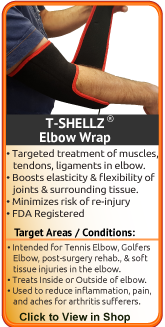 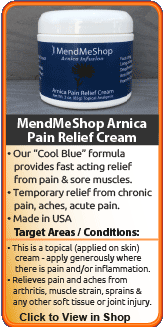 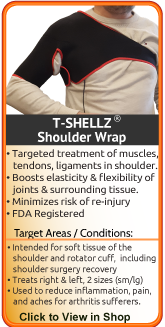 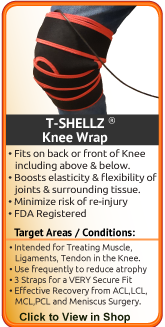 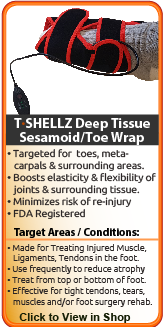 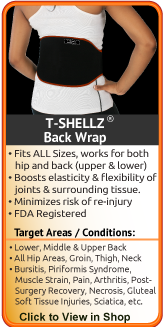 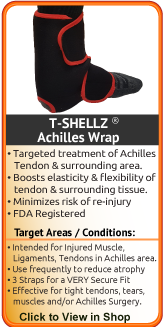 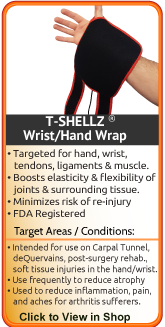 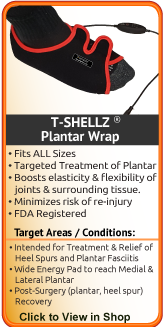  |

